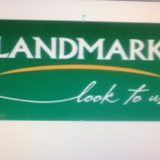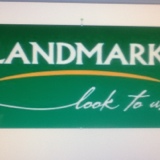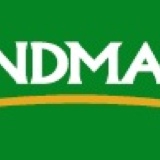Information
-
Document No.
-
Audit Title
-
Client / Site
-
Conducted on
-
Prepared by
-
Location
-
Personnel
1.0 Facility protection & working environment
-
1.1 Are physical barriers in place to protect key building / facility services ( I.e. hydrants, pipes etc.)?
-
1.2 is traffic management signage on display indicating speed limits, loading & parking areas and restricted access zones?<br><br><br><br>
-
1.3 Are security arrangements in place including fencing, lighting, restricted access signage and security alarms / patrols?
-
1.4 Are waste bins available throughout the site for general use?
-
1.5 Are yards constructed in a manner that allows the drainage, collection and disposal of waste without causing environmental harm?
-
1.6 Does the site have an operational truck washing facility?<br>
-
1.7 Are livestock traffic ways constructed and maintained so as not to create unacceptable levels of dust, environmental contamination and be safe for people and animals?
-
1.8 Is lighting adequate for the safe unloading / loading and drafting of livestock?<br>
-
1.9 Do any of the buildings on site contain asbestos? Is it in good repair?<br>
-
1.10 Are public and restricted access areas clearly signposted?
-
1.11 Are terms and conditions on display and are they current? ( feb 2011)
Auditor guidance notes
-
Barriers should be in place to protect infrastructure from damage. Conducting more than 25 sales per year should have truck washing facilities. Lighting should be erected high enough to eliminated shadows and be bright enough to provide good even light.
2.0 Animal welfare
-
2.1 Is water of suitable quality and quantity available for all activities in the sale yard?
-
2.2 Are livestock holding yards and pens equipped with watering toughs?<br>
-
2.3 Are feeding racks or bins and feed available for livestock held on site for greater than 24 hours?
-
2.4 Is there a clear procedure to manage the safe and humane destruction of livestock injured on site?
-
2.5 Are guns and ammunition stored in a secure gun safe?
-
2.6 Are persons responsible for the destruction of livestock licensed to do so?
-
2.7 Is there sufficient shade available for livestock, staff and the general public?
Auditor guidance notes
-
Watering troughs should be accessible and minimise the potential for injury and fouling of the water
3.0 Pedestrian & traffic management
-
3.1 Are livestock loading and unloading areas clearly defined, signposted and segregated to ensure the safety of the general public?
-
3.2 is there a clearly laid out and documented traffic management plan?
-
3.3 Are traffic routes clearly marked throughout?
-
3.4 Do ground surfaces expose staff and the general public to slip / hazards?
-
3.5 Is there safe access for the general public and buyers to view the livestock sale?
-
3.6 Are livestock transferred post selling within areas close to the general public (I.e. shared lanes)?
Auditor guidance notes
4.0 Gates, yards & ramps
-
4.1 Are all gates, yards, ramps and equipment maintained in good working order?<br>
-
4.2 Are gates fitted with safety chains or snap lock (throw) mechanisms?
-
4.3 Are top and bottom rails positioned at an appropriate height to allow bracing?
-
4.4 Do railing heights meet the suggested minimum standard?<br>Top rail 1650 mm from yard surface <br>
-
4.5 Is there potential to get hands and fingers caught in gates when opening and closing?
-
4.6 Are there pinch points where gates come in contact with rails, posts or other fixed objects?
-
4.7 Do gates swing greater than 75 degrees?<br>Gates swinging 75 degrees or less create a natural safety zone
-
4.8 Are ramp floors level and in good condition?
-
4.9 Is the ramp slope greater than 20 degrees (Vic. requires 12 degrees)?
-
4.10 Are ramps fitted with a suitable access walkway?
-
4.11 Are any portable panels used in the facility?
Auditor guidance notes
5.0 Draft / pound
-
5.1 is there a safe method of drafting cattle (I.e. crows nest / overhead draft)?
-
5.2 is there any protection available (i.e. safety zone, posts) for employees drafting livestock via lane draft?
-
5.3 Are vision panels in place around high through put areas?
-
5.4 Are there protective safety areas (safety zones) and escape routes available for persons drafting livestock?
-
5.5 Does the operation of the overhead draft require excessive force or poor manual handling technique?
-
5.6 Is there a suitable ladder/stairs and platform to access and operate the overhead draft?
Auditor guidance notes
6.0 Overhead walkways / stairs & platforms
-
6.1 Are overhead walkways fitted with handrails?
-
6.2 Do walkway handrails meet minimum safety standards?<br>(Aust. Std. Top rail 900-1100mm heigh, mid rail 400-600mm, kick board 50 - 200mm)
-
6.3 Is the walkway width wide enough to enable safe access?<br>(Walkways should be a minimum 430mm wide - sale yard code of practice / 600 mm wide Aust. Std.)<br>
-
6.4 Is the walkway constructed of non slip material?
-
6.5 Are all access ladders secure, correct width and be non slip?
-
6.6 Do platforms have safety rails in place?
Auditor guidance notes
7.0 Plant & equipment
-
7.1 Is all plant and equipment guarded and emergency stop buttons installed where applicable?
-
7.2 Has all portable electrical equipment, power boards and extension leads been tagged and tested?<br><br>
-
7.3 Is the plant and equipment maintained and are records available?<br>
Auditor guidance notes
8.0 Emergency response plan
-
8.1 Is there access to fire extinguishers and hose reels?
-
8.2 Has an emergency plan been developed and implemented for the site?
-
8.3 Is the evacuation / emergency plan displayed?
-
8.4 Has provision been made for an emergency vehicle to access and park during sale days?
-
8.5 Are Landmark contact numbers displayed for out of hours and emergency events?
-
8.6 Are emergency exits highlighted in site buildings?<br>
Auditor guidance notes
9.0 Dangerous goods & hazardous substances
-
9.1 Are hazardous substances used or stored on site?
-
9.2 Are MSDS available for all hazardous substances?
-
9.3 Are hazardous substances stored in a secure location?
-
9.4 Is placarding displayed and appropriate for hazardous substances stored?
-
9.5 Is spill management equipment available for use in an emergency?
Auditor guidance notes
10.0 First aid, PPE & amenities
-
10.1 Is a first aid kit available for use?
-
10.2 Do contents meet potential injury requirements?
-
10.3 Are contents within use by date?
-
10.4 Is there a trained first aid officer on site?
-
10.5 Is sunscreen available for use?
-
10.6. Are toilets and hand washing facilities available?
-
10.7 Is there a covered area located away from the sale yard facilities where meals can be consumed?
-
10.8 Do employees have access to water or other hydration liquids?
Auditor guidance notes
11.0 Electrical safety
-
11.1 Are electrical equipment, extension leads and power boards tagged and tested?<br>
-
11.2 Is the switchboard or boards locked and signposted?
-
11.3 Do switchboards feature ELCD / RCD coverage?
-
11.4 Can switchboards be isolated for maintenance related activities?
Auditor guidance notes
12.0 Landmark livestock procedures
-
12.1 Have all staff working in the saleyard completed the Landmark livestock medical requirements?<br><br><br><br>
-
12.2 Have all staff working at the sale yard completed the livestock handling modules?
-
12.3 Have all short term casual staff completed the casual livestock handling induction?
-
12.4. Is there a formal contract in place between Landmark and persons contracted to manage the on site livestock operations?
-
12.5. Are staff aware off their heavy vehicle fatigue management obligations?
-
12.6. Are sale yards inspected monthly and the inspection document minuted?
-
12.7. Is a meeting held to discuss and review safety issues and improvements at the saleyard?<br>(This can be part of a broader meeting as long as it is documented)
-
12.8. Is there a process for reporting incidents/maintenance issues at the saleyard?
-
12.9. Are there relevant standard operating procedures and work instructions that include animal welfare considerations and the humane destruction of livestock?
Auditor guidance notes
13.0 Cattle dip
-
13.1 is the cattle dip fenced and access restricted?
-
13.2 Are there splash guards in place to prevent dip coming in contact with workers?
-
13.3 Is a copy of the MSDS located at the dip to assist with prompt injury management?
Auditor guidance notes
14.0 Livestock selling scales
-
14.1 Are scales certified and calibrated as per legislative requirements?
-
14.2 Are procedures in place to ensure the accuracy of scales at all times?
-
14.3 Are records of maintenance available?
Auditor guidance notes
15.0 Site presentation
-
15.1 Are facilities free of obvious signs of ground contamination?
-
15.2. Does the site meet Landmark minimum housekeeping standards?










